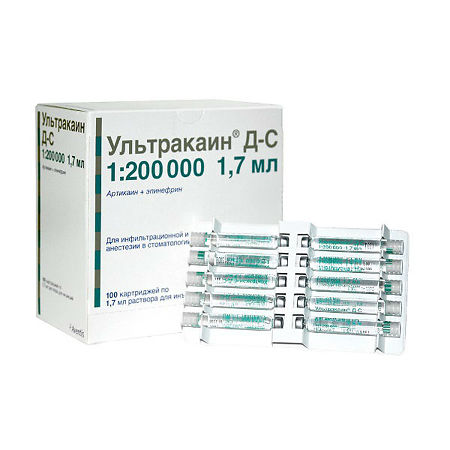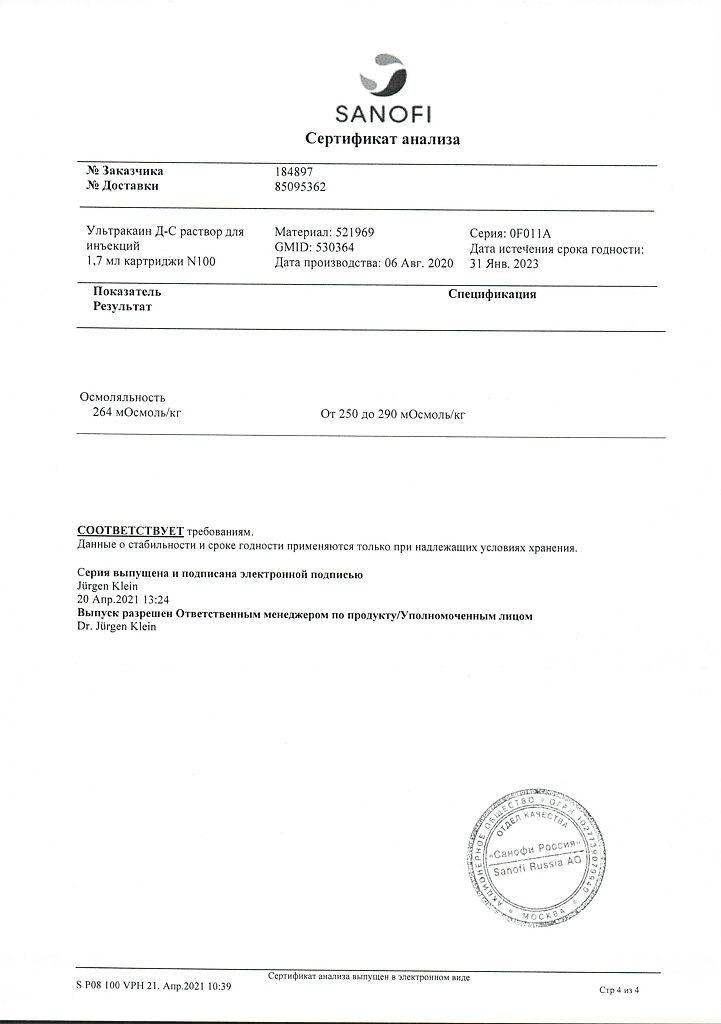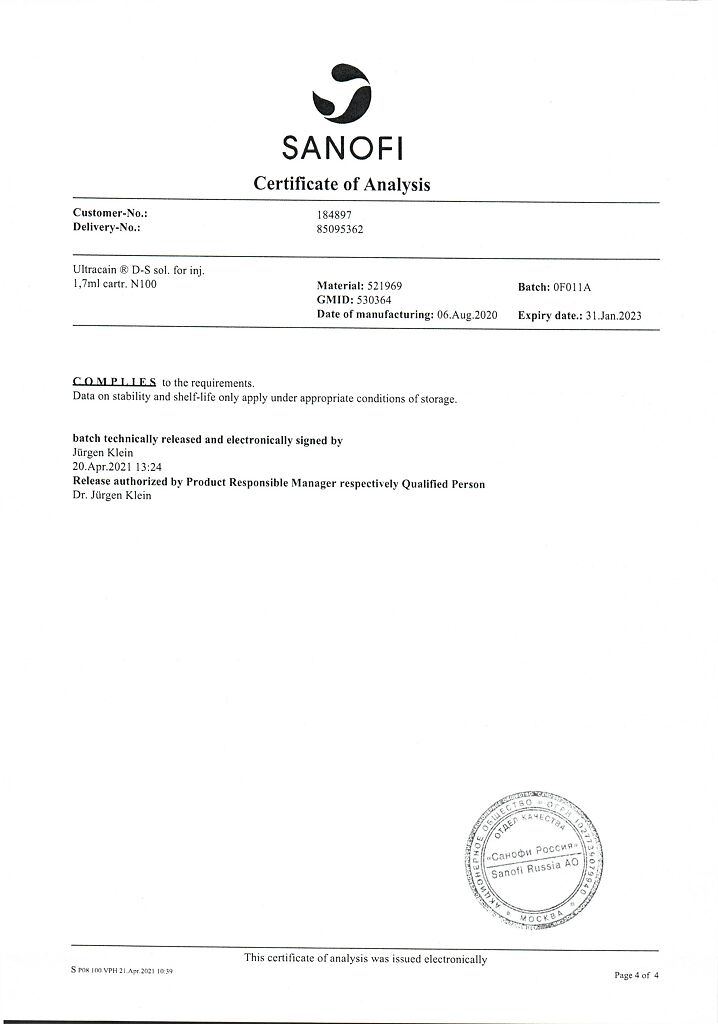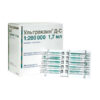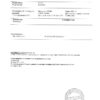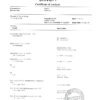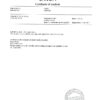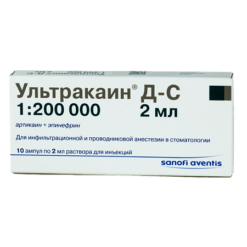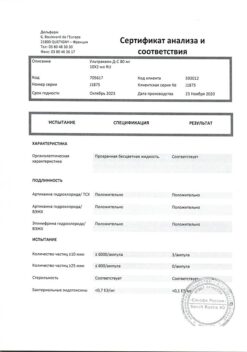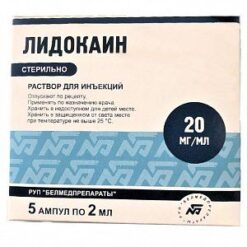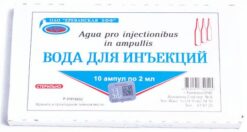No products in the cart.
Ultracaine D-C, 40 mg+0.005 mg/mL cartridges 1.7 ml 100 pcs
€1.00
Out of stock
(E-mail when Stock is available)
EAN: 4030685508740
SKU: 210459
Categories: Anesthesia and resuscitation, Local anesthetics, Medicine
Description
Pharmacodynamics
Ultracaine D-C is a local anesthetic for infiltration and conduction anesthesia in dental practice. It has a fast action (latency period of 1 to 3 minutes).
The duration of anesthesia is at least 75 minutes.
Owing to the low content of epinephrine in the drug, its effect on the cardiovascular system is expressed insignificantly: there is almost no increase in blood pressure and increase in heart rate.
Pharmacokinetics
Binding to plasma proteins of articaine is 95%. After injection into the oral submucosa, the half-life is on average 25 minutes.
The drug penetrates the placental barrier to a minimal extent and is practically not excreted with the breast milk. Articaine is excreted from the body mainly through the kidneys.
Indications
Indications
Infiltration and conduction anesthesia in dentistry (including in patients with concomitant severe somatic diseases):
uncomplicated removal of one or more teeth;
treatment of cavities and grinding of teeth before prosthetics.
Pharmacological effect
Pharmacological effect
Pharmacodynamics
Ultracain D-S is a local anesthetic for infiltration and conduction anesthesia in dental practice. It has a rapid effect (latent period – from 1 to 3 minutes).
The duration of anesthesia is at least 75 minutes.
Due to the low content of epinephrine in the drug, its effect on the cardiovascular system is insignificant: there is almost no increase in blood pressure and heart rate.
Pharmacokinetics
Plasma protein binding of articaine is 95%. After injection into the oral submucosa, the half-life averages 25 minutes.
The drug penetrates the placental barrier to a minimal extent and is practically not excreted in breast milk. Articaine is excreted from the body primarily through the kidneys.
Special instructions
Special instructions
To avoid intravascular injection, it is essential to carry out an aspiration test, for which the Uniject K/Uniject K vario injection syringes are particularly suitable when using cartridges.
Injection pressure should correspond to the sensitivity of the tissue.
To prevent infections (including hepatitis), it is necessary to ensure that new sterile syringes and needles are always used each time a solution is taken from vials or ampoules. Opened cartridges cannot be used again for other patients!
Do not use a damaged cartridge for injections. Maximum safety against glass damage and perfect functioning is ensured by the use of accessories such as syringe stands (infiltration anesthesia: Uniject K or Uniject K vario; intraligamentary anesthesia: Ultraject).
You can eat food only after sensitivity returns.
Active ingredient
Active ingredient
Articaine, [Epinephrine]
Composition
Composition
1 ml of solution for injection contains:
active ingredients:
articaine hydrochloride – 40 mg and epinephrine hydrochloride – 0.006 mg;
excipients:
sodium metabisulfite – 0.5 mg,
sodium chloride – 1 mg,
water for injections.
Pregnancy
Pregnancy
For surgical interventions during pregnancy, local anesthesia is considered a gentle method of pain relief. Articaine crosses the placental barrier in smaller quantities than other local anesthetics.
Due to the very rapid drop in the level of articaine and its rapid elimination from the body, it enters breast milk in clinically insignificant quantities. Therefore, there is no need to interrupt breastfeeding.
The effectiveness and safety of the drug in children under 4 years of age has not been studied.
Contraindications
Contraindications
Hypersensitivity to articaine, epinephrine or any other component of the drug.
Since the drug contains epinephrine, it is contraindicated in the following cases:
with paroxysmal tachycardia and other heart rhythm disturbances,
angle-closure glaucoma,
anemia (including B-12 deficiency anemia),
methemoglobinemia,
hypoxia.
Do not use in patients with bronchial asthma with hypersensitivity to sulfites.
Side Effects
Side Effects
Depending on the dosage, disturbances in the activity of the central nervous system may occur:
clouding of consciousness up to its loss,
breathing problems up to life-threatening arrest,
muscle tremors and muscle twitching up to generalized convulsions,
nausea,
vomit.
A drop in blood pressure and cardiac arrest may also occur when the drug is administered.
Allergic reactions can manifest themselves: in the form of swelling or inflammation at the injection site, skin hyperemia, itching, conjunctivitis, rhinitis, swelling of the face (Quincke’s edema) with swelling of the upper and/or lower lip, swelling of the vocal cords with a feeling of a lump in the throat and difficulty swallowing, urticaria, difficulty breathing up to anaphylactic shock. Headache occurs frequently.
Other side effects caused by epinephrine – tachycardia, heart rhythm disturbances, increased blood pressure – are rare at a low concentration of 1:200,000 (0.5 mg/100 ml).
Occasionally, with an accidental intravascular injection, areas of ischemia may appear, including tissue necrosis at the injection site.
Due to the sodium disulfite content, in some cases, patients with bronchial asthma may experience hypersensitivity reactions, manifested in the form of vomiting, diarrhea, rapid breathing, acute asthma attack, disturbances of consciousness or shock.
Interaction
Interaction
The effect of vasoconstrictors that increase blood pressure, such as adrenergic agonists, such as epinephrine, can be enhanced by tricyclic antidepressants or MAO inhibitors.
Similar observations have been reported for concentrations of norepinephrine 1:25,000 and epinephrine 1:80,000 as vasoconstrictors.
The concentration of epinephrine in Ultracaine D-S is much lower – 1:200000. However, it is necessary to take into account the possibility of such an increase in action.
Overdose
Overdose
Treatment is symptomatic.
When the first signs of side effects or intoxication appear, for example, nausea, motor restlessness, clouding of consciousness during the injection, it should be interrupted, the patient should be placed in a horizontal position, the airways should be cleared, and the pulse and blood pressure should be monitored. It is recommended, even if the symptoms do not seem too severe, to provide intravenous access.
In case of breathing problems, depending on the severity, give oxygen and, in some cases, perform artificial respiration. Central analeptics are contraindicated. Muscle twitching or generalized convulsions are relieved by intravenous injection of short-acting or ultra-short-acting barbiturates.
A drop in blood pressure, tachycardia, or bradycardia is often corrected by placing the patient in a horizontal position. In case of severe circulatory disorders and shock of any origin, after stopping the injection, emergency measures are indicated: ensuring airway patency (oxygen insufflation), intravenous infusion of fluid (electrolyte solution), glucocorticosteroids. Additionally, plasma substitutes and albumin can be administered.
In case of threatening circulatory disorders and increasing bradycardia, 0.25 ml to 1 ml of epinephrine is administered. Intravenous injection of epinephrine should be given slowly while monitoring pulse rate and blood pressure.
A single dose of intravenous injection of epinephrine should not exceed 0.1 mg; in the future, if necessary, epinephrine can be administered by drip (the rate of infusion through the drip is adjusted depending on the pulse rate and blood pressure).
Severe forms of tachycardia and tachyarrhythmia can be eliminated by the use of antiarrhythmic drugs, but non-selective beta-blockers should not be used. Oxygen supply and blood circulation control are necessary in any case.
If blood pressure increases in patients suffering from arterial hypertension, peripheral vasodilators should be used, if necessary.
Storage conditions
Storage conditions
In a place protected from light, at a temperature not exceeding 25 °C
Shelf life
Shelf life
2.5 years
Manufacturer
Manufacturer
Sanofi-Aventis Deutschland GmbH, Germany
Additional information
| Shelf life | 2.5 years |
|---|---|
| Conditions of storage | In a light-protected place, at a temperature not exceeding 25 °C |
| Manufacturer | Sanofi-Aventis Deutschland GmbH, Germany |
| Medication form | solution for injection |
| Brand | Sanofi-Aventis Deutschland GmbH |
Other forms…
Related products
Buy Ultracaine D-C, 40 mg+0.005 mg/mL cartridges 1.7 ml 100 pcs with delivery to USA, UK, Europe and over 120 other countries.

